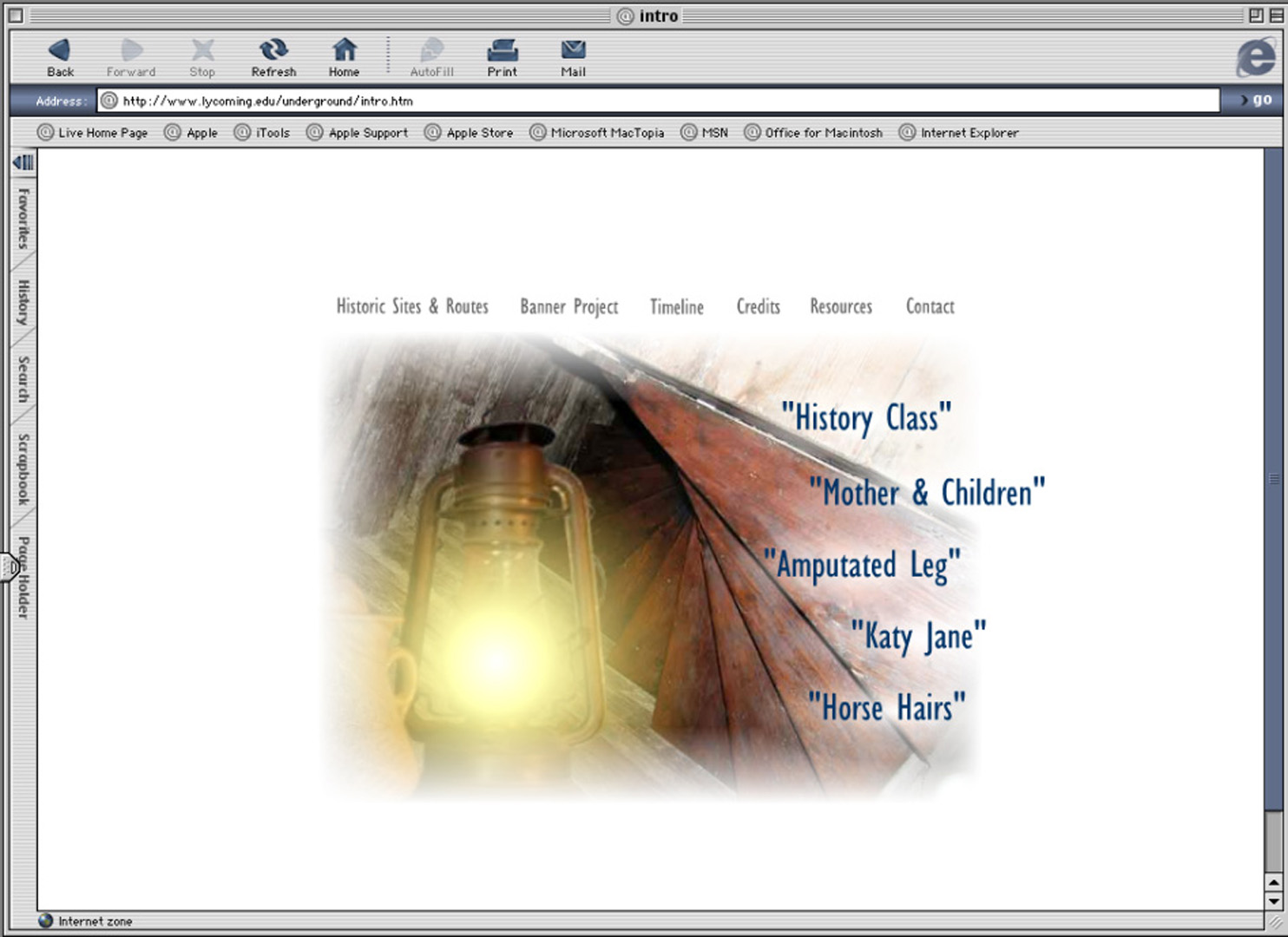“Freedom Bound: Creating A Digital Public Art Project” by Estomin
Conference:
Type(s):
Title:
- Freedom Bound: Creating A Digital Public Art Project
Presenter(s)/Author(s):
Abstract:
Freedom Bound is a collaborative Public Art Project about the Underground Railroad in Lycoming County, PA. The project includes an interactive web site and five large-scale digital banners, printed on waterproof canvas, which function as moveable billboards. The goals of the project were to inspire, encourage, and stimulate students to use their design and computer graphics skills to educate the public; to give art students experience in working collaboratively; to give students the opportunity to work on a project with a visiting artist; and to build ties between the college and the broader community.
The banners, which feature images from seven local Underground Railroad sites, were unveiled on Juneteenth Day at Wegmans Supermarket, where they were displayed during the summer before circulating throughout the Williamsport Area Public School District during the 2003-04 school year. Future banner sites include the public library, Lycoming County Historical Museum, YWCA, and local community centers. In the summer of 2005, the banners will begin a tour outside the county.
The creation of the digital banners represented collaboration on several levels. First, twelve senior photography and commercial design students worked with local historians to research the history of the Underground Railroad in Lycoming County, PA. Students shared their research and scanned the historical documents, maps and photographs they found for use by all. Members of the group scouted locations and contacted current owners of structures that harbored fugitive slaves in the past. Since the plan was to display the banners publicly, the School Board, Library and owners of local business had to be convinced to hang the banners when completed. Creating a public art project for display outside the usual art venues represented a new concept for our fine art students. The project required months of research, negotiation and collaboration across academic disciplines before the design stage began.






